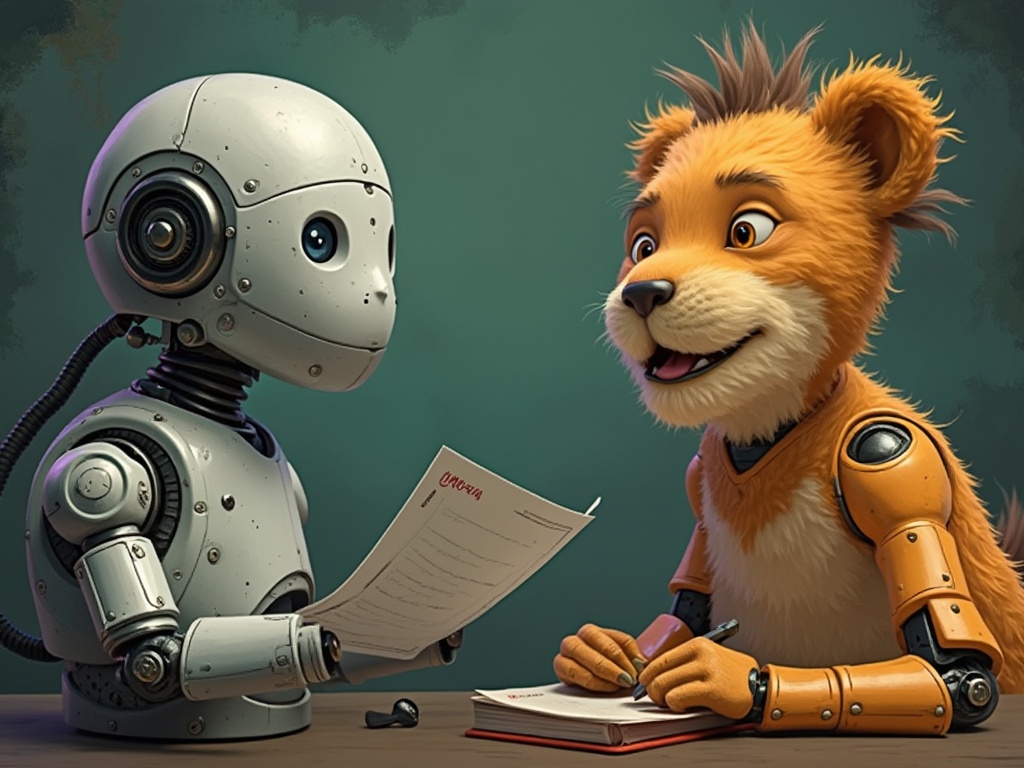AI-powered dialogue writing tools have transformed the storytelling landscape by enabling writers to craft more authentic character conversations with unprecedented efficiency. Modern ai story writing approaches combine the creative intuition of human authors with computational assistance to produce dialogue that resonates with readers and maintains the unique voice of each character.
Key Takeaways
- Unrealistic dialogue causes 78% of readers to abandon stories they might otherwise enjoy
- Character-specific speech patterns create distinctive voices that readers can recognize without dialogue tags
- The most convincing dialogue is typically shorter and punchier than what novice writers tend to create
- Using ai dialogue writing tools requires careful prompt engineering to maintain character consistency
- Real-world conversations provide the best inspiration for authentic dialogue patterns
Why Readers Abandon Stories with Poor Dialogue
Poor dialogue can kill an otherwise excellent story. According to reader feedback studies, a staggering 78% of readers cite unrealistic dialogue as a primary reason for abandoning a book. This statistic alone highlights how critical convincing conversation is to successful storytelling.
When characters speak in ways that sound forced or unnatural, readers quickly lose their immersion in the fictional world. This dialogue failure also undermines character development, as readers struggle to connect with characters who don’t sound like believable people. The impact is far more significant than many writers realize.
Let’s examine two contrasting dialogue examples:
Ineffective: “I am feeling quite angry about your actions yesterday when you took my car without asking permission. It made me feel as if you don’t respect my property.”
Effective: “You took my car? Without asking? Seriously, Mark, who does that?”
The first example sounds stiff and overly formal – nobody actually speaks that way when upset. The second captures the natural rhythms of emotional speech with its fragments and direct questions.
Character Voice: The Foundation of Believable Dialogue
Creating distinctive character voices forms the foundation of memorable dialogue. Each character should speak in a way that reflects their unique background, education level, and emotional state. This consistency helps readers identify who’s speaking even without dialogue tags.
Personality-driven language patterns make characters jump off the page. A college professor might use more complex vocabulary and complete sentences, while a teenager might rely on current slang and sentence fragments. Assigning verbal tics and habitual expressions to characters further distinguishes their voices.
Consider these techniques for creating distinctive speech patterns:
- Assign specific filler words to certain characters (“like,” “you know,” “actually”)
- Vary sentence length based on personality (short and direct vs. rambling)
- Create character-specific idioms or repeated phrases
- Adjust formality levels based on the character’s background
Emotional continuity through conversation is equally important. Characters’ dialogue should shift subtly but noticeably after major plot events. David Baldacci recommends tracking emotional through-lines for each character to ensure their dialogue reflects their evolving experience of the story.
The Art of Compression: Less Is More
Real human conversations rarely involve lengthy monologues or perfectly structured sentences. In fact, most exchanges in everyday conversation consist of just 3-5 sentences per speaking turn. Writers often make the mistake of including too much exposition in dialogue, creating conversations that feel artificial.
The art of compression involves cutting dialogue to its essential elements while preserving character voice. I’ve found that reading my dialogue aloud helps identify passages that sound unnatural or overly verbose. Professional editors often trim dialogue by 30-50% from first drafts.
Natural conversation includes these elements that should appear in your written dialogue:
- Interruptions when characters are emotionally charged
- Sentence fragments that mimic actual speech patterns
- Responses that occasionally talk past each other, as in real conversations
- Varied sentence structures that shift with emotional intensity
Sentence structure variety adds realism and rhythm to dialogue. Mix short declarative statements with occasional complex sentences for characters who would reasonably speak that way. Use sentence fragments for emotional impact or to indicate a character’s distracted state of mind.
AI Dialogue Generation: New Tools for Writers
AI is changing storytelling fundamentally, particularly in dialogue creation. Modern ai story writing generators offer sophisticated options for customizing output to match different character voices. This technology has advanced significantly, now capable of maintaining consistent character voices across entire manuscripts.
When using dialogue writing ai, I select tone options appropriate for each character – humorous, serious, casual, or professional. The best approach assigns consistent emotional markers to character dialogue prompts to maintain voice consistency. For example, your prompt might specify “anxious college student who uses academic terminology but stumbles when nervous.”
Prompt engineering makes the critical difference between generic and compelling AI-generated dialogue. Consider this template for more natural results: “Write dialogue as a casual friend with contractions, frequent use of slang, and occasional personal anecdotes.”
Before prompt engineering:
“I am uncertain about whether I should attend the function tonight. I have responsibilities to complete first.”
After better prompt engineering:
“God, I don’t know if I can handle that party tonight. I’ve got this mountain of work… but then again, I haven’t been out in forever.”
Different genres require specialized prompts when using AI as a co-author. Romance dialogue benefits from prompts specifying emotional subtext, while thriller dialogue needs prompts emphasizing tension and withholding information.
Eavesdropping Strategies: Learning from Real People
Nothing improves dialogue writing like studying actual human conversation. The “coffee shop method” involves casually noting the rhythms and patterns of real-world discussions. I’ve collected some of my best dialogue insights by simply listening to conversations in public spaces.
What you’ll notice from eavesdropping:
- People rarely speak in complete, grammatically correct sentences
- Conversations frequently include interruptions and topic shifts
- Regional expressions and contextual references appear naturally
- Most exchanges include non-verbal responses and pauses
Creating distinctive character vernacular starts with these real-world observations. Assign signature phrases to main characters that reflect their background and personality. However, avoid dated slang that will quickly make your dialogue feel stale, unless writing historical fiction.
For ensemble casts, dialogue differentiation becomes especially important. Each character should have speech patterns so distinctive that readers can identify who’s speaking without dialogue tags. This technique appears in the works of Elmore Leonard, famous for his razor-sharp dialogue.
Implementation Guide: From Draft to Polished Dialogue
Effective dialogue begins before the first draft. Pre-writing dialogue planning should assess what each conversation needs to accomplish in your story. Create a purpose statement for important conversations: “This dialogue must reveal the betrayal while maintaining Character A’s ignorance.”
I use a character objective tracking sheet to ensure each person in a conversation has clear, sometimes conflicting goals. This creates natural tension and prevents the “two people agreeing with each other” syndrome that makes for boring dialogue.
A hybrid AI-human workflow can transform dialogue writing. AI screenwriting tools generate multiple dialogue variations for key scenes, which I then refine to ensure character consistency and emotional truth. This ai for writing dialogue approach provides creative options I might not have considered.
Once I’ve written dialogue, I implement a read-aloud testing protocol. Reading dialogue aloud—or better yet, having different people read different characters—immediately reveals what works and what doesn’t. This step identifies unnatural phrasings that your eyes might miss on the page.
Multilingual and Cross-Cultural Dialogue Considerations
Modern AI tools support dialogue generation across multiple languages, opening new possibilities for global storytelling. These tools can maintain character consistency even when generating dialogue in languages the author doesn’t speak fluently.
Cultural idiom translation requires special attention. What sounds natural in one culture may seem bizarre in another. AI assistance can help adapt dialogue across cultural contexts while preserving the essential character voice and emotional content.
When writing cross-cultural conversations, consider these factors:
- Different cultures have varying levels of directness in conversation
- Humor and idioms rarely translate directly between languages
- Status relationships may be expressed differently across cultures
- Cultural context influences appropriate topics and taboos
Using ai dialogue writing tools with cultural sensitivity settings helps create authentic representation in cross-cultural exchanges. This feature has become increasingly sophisticated, allowing for nuanced dialogue that respects cultural differences.
Common Dialogue Pitfalls and Their Solutions
The infamous “As You Know” problem plagues many writers. This occurs when characters tell each other information they already know solely to inform the reader. This expository dialogue instantly signals artificiality.
Instead of: “As you know, John, we’ve been brothers for thirty years and our father left us this business in his will three months ago.”
Try: “You’re making the same mistake Dad did. Is that really how you want to run this place?”
Formality mismatches represent another common dialogue problem. Characters often speak with inappropriate levels of formality for their relationship or situation. In most cases, you should use contractions and colloquialisms appropriate to the character and setting.
The quick test for dialogue authenticity: Would this character actually say this, in this way, to this person, in this situation? If not, revise until the answer is yes. This simple reality check prevents many common dialogue problems and helps ensure your readers stay immersed in your story world.
This article discusses how AI-powered dialogue writing tools help authors create more authentic character conversations. It emphasizes that unrealistic dialogue causes 78% of readers to abandon stories they might otherwise enjoy. The article covers techniques for creating distinctive character voices, using compression to make dialogue more natural, leveraging AI dialogue generation tools effectively, and learning from real-world conversations.
| Key Points |
|---|
| Poor dialogue causes 78% of readers to abandon stories |
| Effective dialogue is typically shorter and uses natural speech patterns |
| Each character should have distinctive speech patterns reflecting their background |
| AI writing tools can maintain character voice consistency when properly prompted |
| Studying real-world conversations provides the best inspiration for authentic dialogue |
| Reading dialogue aloud helps identify unnatural phrasing |



